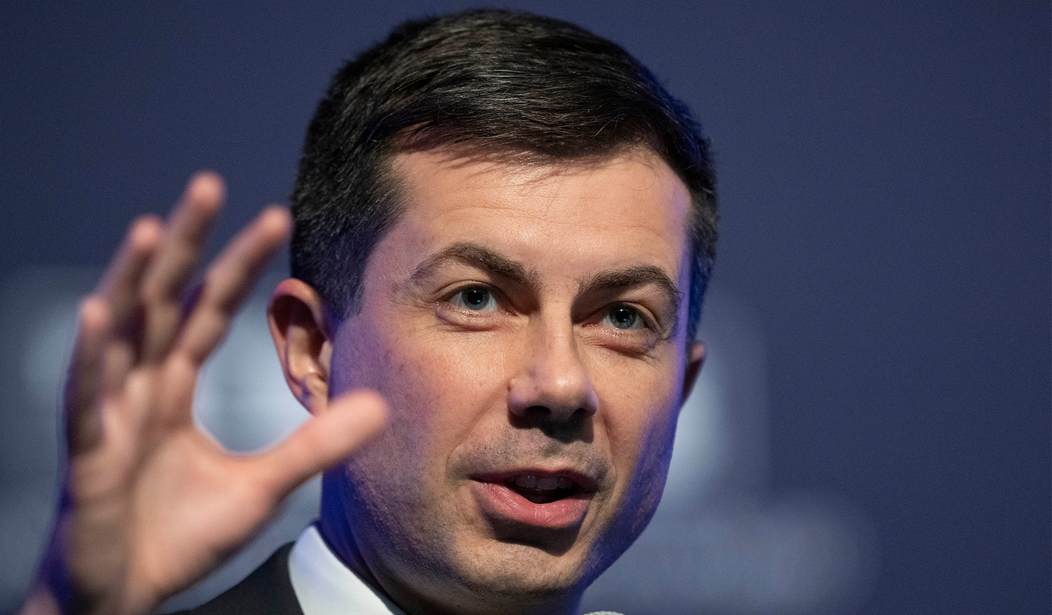We've spent a fair amount of time here covering problems that commercial airlines have been encountering with episodes of massive turbulence that can send an airliner into a sudden, deep drop. Whenever problems impacting the air travel industry crop up, I find myself wondering what, if anything the Secretary of Transportation is doing about it. This was clearly a case of needing to be careful what you wish for because Pete Buttigieg showed up on the Sunday shows this weekend and decided to weigh in on the air turbulence issue for "Face the Nation." As you would expect, he blamed the problem on climate change. But an answer like that doesn't really provide much comfort for the passengers who are having their heads slammed into the ceilings of the planes. (New York Post)
Transportation Secretary Pete Buttigieg faulted climate change for the increase in severe turbulence on commercial airline flights while citing estimates that it has shot up by double digits over recent decades.
Buttigieg, 42, contended that top officials will need to “reevaluate” protocols for handling those severe weather events in the future and that the US will need to bolster its domestic infrastructure.
“The reality is, the effects of climate change are already upon us in terms of our transportation,” Buttigieg told CBS’ “Face the Nation” on Sunday.
I don't know who was expecting a better explanation from a Secretary of Transportation whose primary qualification for the job was the fact that he "always really liked cars." Going to the default explanation that this should all be blamed on climate change is unhelpful at best. But to be fair to Buttigieg, even if he were an expert in this field, he wouldn't have been able to tell us very much because it's a very complicated topic
Some of the actual experts in the field have been weighing in, particularly since the Air Singapore debacle, and doing their best to explain the phenomenon. The bottom line is that planes experience turbulence when they transition from an area of higher air pressure to lower air pressure or vice versa. That typically caused the plane to lurch up or down, but it can also impart motion from left to right. Sadly, knowing that much doesn't help meteorologists predict it because it can be caused by many different factors and it can spread out for hundreds or even thousands of miles. It can be driven by thunderstorms, rapid changes in air temperature, the collision of high and low pressure fronts, and other phenomena. But unlike rain clouds and thunderheads that can be tracked by meteorological radar, this phenomenon takes place in clear air (as the name implies) so it can't be identified at a distance.
Buttigieg's assertion that a prolonged increase in air turbulence is being driven by "warming" is possibly correct in some cases. But it's also caused by colder air. The only way you could completely eliminate air turbulence would be to stabilize the entire atmosphere at one temperature and one pressure. That's obviously never going to be possible, so the best we can do is figure out a way to predict and detect it. There are supposedly scientists working on that problem now, but it's going to take some form of technology that we don't currently possess, even with our fleet of weather satellites.
We can't even map out where turbulence is less likely and change our air traffic patterns accordingly. It happens at almost every altitude starting at levels not all that far above the ground. Planes can't avoid it unless they are flying at ridiculously low altitudes. The main problem with the Transportation Secretary's comments is that he's not offering any sort of solution and he doesn't appear to fully understand the issue. Of course, there is no solution at the moment. Sometimes it's okay to answer a question by saying, "I don't know." That would at least be honest and wouldn't require ginning up the climate change alarmism army to march into action yet again.
For what it's worth (not a great deal), here's a video from an NBC News meteorologist attempting to explain how clear air turbulence forms, what causes it, and what can be done about it to protect airlines. Spoiler alert: They're not exactly sure and there's not much to be done.








Join the conversation as a VIP Member